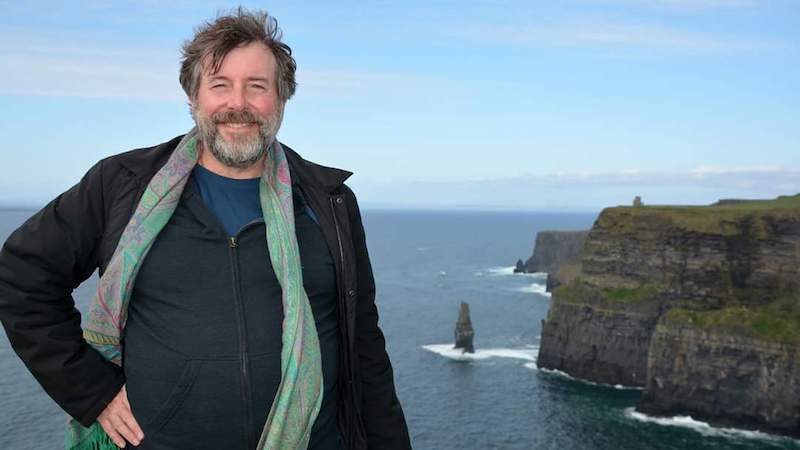
Nine. That’s the magic number for the array of personality types that give you a clue about your deepest, authentic gifts. Each personality type indicates patterns of our own behavior based on our human psyche. The map of these numbers is called an Enneagram.
“In recent years, Oscar Ichazo presented it as a map of nine distinct vectors or patterns of the human psyche,” said Russ Hudson, Enneagram Typologist and co-founder of the Enneagram Institute. “We have all nine of these patterns within us, but one of them is our primary way to cope with challenges and with our emotions. Our sense of self tends to constellate around one of these patterns more than the others.”
Do you lead with your mind, your heart, or your gut? The nine numbers fall into those categories, and when you know your number(s), the enneagram method gives you critical knowledge to help you explore your greatest potential. “When we understand the Enneagram in the right way, it is a treasure trove of wisdom about the workings of our inner thoughts, feelings, and drives.”
Hudson took a moment to give us more insight into the numbers, what they mean, and how to apply a new, clearer, and more effective way of contributing to the world.
Christine: Is the Enneagram a legitimate way to gauge someone’s potential contribution to change?
Russ Hudson: The Enneagram certainly gives us some clues about what comes most easily to us. We are each carrying a particular lesson that everyone needs to learn.
CC: How do we use the enneagram system to maximize an individual’s potential?
RH: The Enneagram works best in conjunction with practices that support the cultivation of presence and awareness. Recognizing our central pattern, and “catching ourselves in the act,” provides an ongoing reminder in life to come back to our centered awareness. We turn our habitual patterns into alarm clocks to wake ourselves up.
Further, the Enneagram teaches us about our three main qualities of intelligence: cognitive, emotional, and instinctual. Each one of these elements helps us recognize and experience more and more clearly what it is like to live in presence, especially when we are involved in our busy lives. It also helps us customize practices that will be most helpful in “getting out of our box.”
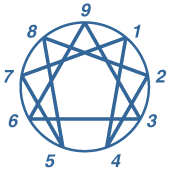
CC: If you are a “Thinking” type, how does that manifest?
RH: The three Thinking Types (points 5, 6, and 7) teach us about the relationship between our deeper mind as lucid, crisp awareness and the usual clatter that goes on in our heads. Each of these points represents a particular characteristic of True Mind as well as some of the symptoms and problems that arise when we are no longer present with our mind.
CC: The “Emotion” type?
RH: The three Feeling Types (points 2, 3, and 4) teach us about the relationship between our deeper heart as the source of compassion, personal meaning, real intimacy and the series of emotional reactions that usually dominate our feelings, or the ways our buttons get pushed. Each of these three points represents a particular characteristic of the Deeper Heart as well as some of the symptoms and problems that arise when we are no longer present with what we are feeling.
CC: The "Instinct” type?
RH: The three Instinctual or Gut Types (points 8, 9, and 1) teach us about the relationship between embodied presence as lifeforce, groundedness, and intelligent response, and the various ways we become numb and cut off from our life energy and from real connection with the world. Each of these three points represents a particular characteristic of the Embodied Presence as well as some of the symptoms and problems that arise when we are no longer relaxed, and awake in our bodies.
CC: Is it possible to be more than one? How does that manifest?
RH: The general view in the Enneagram work is that we have elements of all nine points, but one is our “home base.” It functions both as our primary way of constructing an ego self, but also, when we become compassionately aware of that ego construction process, as our greatest gift. There are other important type qualities that are part of our personality described by the types connected with our main type by the inner lines of the Enneagram symbol. The human psyche is dynamic and the Enneagram model accounts for this, but also guides us back to awareness of the key patterns on which our ego hinges.
CC: With 9 actual types, how do we integrate this knowledge to connect with ourselves and others?
RH: When we get a clearer picture of ourselves, it also helps us understand the motivations of others, and can be a powerful support in better dancing with the different motivations and needs of the people who are most important to us.
CC: What’s your top recommendation when learning about and applying Enneagram theory?
RH: By all means, take your time. It is a huge topic, and it impacts pretty much every part of our psychological, spiritual, and relational lives. Read some of the good books about it, but also make sure that you learn about it experientially. It is one thing to know the descriptions of the nine type patterns, and quite another to know how to use that knowledge for growth and development.
I always invite my students to keep coming back to what aspects of the teachings most help them wake up. That is where we want to focus our attention.

“Remembering to be as self compassionate as I can and praying to the divine that we're all a part of.”
–Aaron
“Prayer, reading, meditation, walking.”
–Karen
“Erratically — which is an ongoing stream of practice to find peace.”
–Charles
“Try on a daily basis to be kind to myself and to realize that making mistakes is a part of the human condition. Learning from our mistakes is a journey. But it starts with compassion and caring. First for oneself.”
–Steve
“Physically: aerobic exercise, volleyball, ice hockey, cycling, sailing. Emotionally: unfortunately I have to work to ‘not care’ about people or situations which may end painfully. Along the lines of ‘attachment is the source of suffering’, so best to avoid it or limit its scope. Sad though because it could also be the source of great joy. Is it worth the risk?“
–Rainer
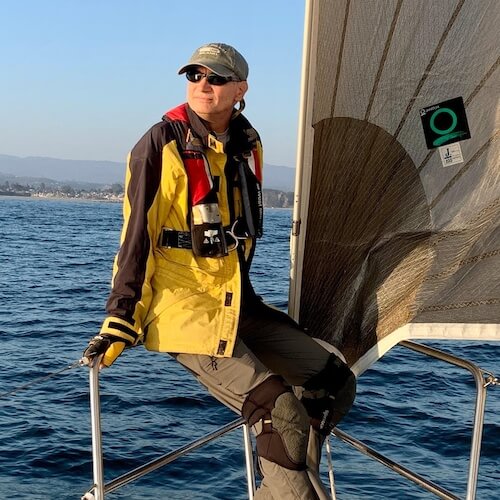

“It's time for my heart to be nurtured on one level yet contained on another. To go easy on me and to allow my feelings to be validated, not judged harshly. On the other hand, to let the heart rule with equanimity and not lead the mind and body around like a master.”
–Suzanne
“I spend time thinking of everything I am grateful for, and I try to develop my ability to express compassion for myself and others without reservation. I take time to do the things I need to do to keep myself healthy and happy. This includes taking experiential workshops, fostering relationships, and participating within groups which have a similar interest to become a more compassionate and fulfilled being.“
–Peter
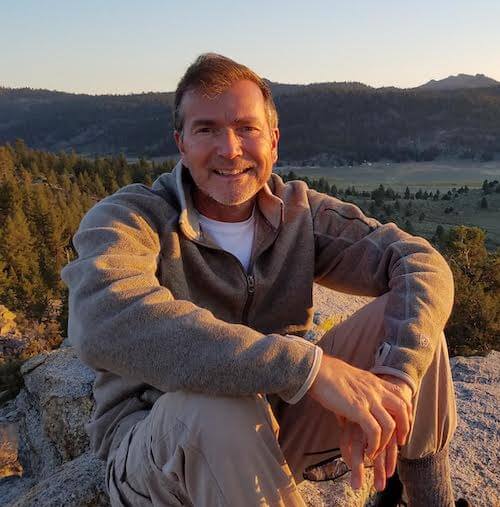
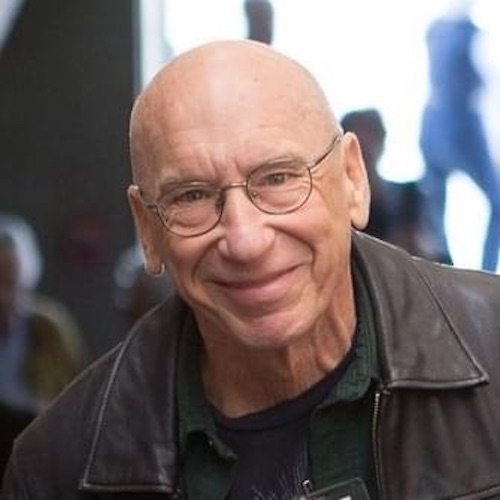
“Self-forgiveness for my own judgments. And oh yeah, coming to Esalen.”
–David B.
“Hmm, this is a tough one! I guess I take care of my heart through fostering relationships with people I feel connected to. Spending quality time with them (whether we're on the phone, through messages/letters, on Zoom, or in-person). Being there for them, listening to them, sharing what's going on with me, my struggles and my successes... like we do in the Esalen weekly Friends of Esalen Zoom sessions!”
–Lori

“I remind myself in many ways of the fact that " Love is all there is!" LOVE is the prize and this one precious life is the stage we get to learn our lessons. I get out into nature, hike, camp, river kayak, fly fish, garden, I create, I dance (not enough!), and I remain grateful for each day, each breath, each moment. Being in the moment, awake, and remembering the gift of life and my feeling of gratitude for all of creation.”
–Steven
“My physical heart by limiting stress and eating a heart-healthy diet. My emotional heart by staying in love with the world and by knowing that all disappointment and loss will pass.“
–David Z.
Today, September 29, is World Heart Day. Strike up a conversation with your own heart and as you feel comfortable, encourage others to do the same. As part of our own transformations and self-care, we sometimes ask for others to illuminate and enliven our hearts or speak our love language.
What if we could do this for ourselves too, even if just for today… or to start a heart practice, forever?
Christine Chen is a two-time Emmy winning journalist, best-selling author, California native, and senior teacher of yoga and Ayurveda.

Nine. That’s the magic number for the array of personality types that give you a clue about your deepest, authentic gifts. Each personality type indicates patterns of our own behavior based on our human psyche. The map of these numbers is called an Enneagram.
“In recent years, Oscar Ichazo presented it as a map of nine distinct vectors or patterns of the human psyche,” said Russ Hudson, Enneagram Typologist and co-founder of the Enneagram Institute. “We have all nine of these patterns within us, but one of them is our primary way to cope with challenges and with our emotions. Our sense of self tends to constellate around one of these patterns more than the others.”
Do you lead with your mind, your heart, or your gut? The nine numbers fall into those categories, and when you know your number(s), the enneagram method gives you critical knowledge to help you explore your greatest potential. “When we understand the Enneagram in the right way, it is a treasure trove of wisdom about the workings of our inner thoughts, feelings, and drives.”
Hudson took a moment to give us more insight into the numbers, what they mean, and how to apply a new, clearer, and more effective way of contributing to the world.
Christine: Is the Enneagram a legitimate way to gauge someone’s potential contribution to change?
Russ Hudson: The Enneagram certainly gives us some clues about what comes most easily to us. We are each carrying a particular lesson that everyone needs to learn.
CC: How do we use the enneagram system to maximize an individual’s potential?
RH: The Enneagram works best in conjunction with practices that support the cultivation of presence and awareness. Recognizing our central pattern, and “catching ourselves in the act,” provides an ongoing reminder in life to come back to our centered awareness. We turn our habitual patterns into alarm clocks to wake ourselves up.
Further, the Enneagram teaches us about our three main qualities of intelligence: cognitive, emotional, and instinctual. Each one of these elements helps us recognize and experience more and more clearly what it is like to live in presence, especially when we are involved in our busy lives. It also helps us customize practices that will be most helpful in “getting out of our box.”

CC: If you are a “Thinking” type, how does that manifest?
RH: The three Thinking Types (points 5, 6, and 7) teach us about the relationship between our deeper mind as lucid, crisp awareness and the usual clatter that goes on in our heads. Each of these points represents a particular characteristic of True Mind as well as some of the symptoms and problems that arise when we are no longer present with our mind.
CC: The “Emotion” type?
RH: The three Feeling Types (points 2, 3, and 4) teach us about the relationship between our deeper heart as the source of compassion, personal meaning, real intimacy and the series of emotional reactions that usually dominate our feelings, or the ways our buttons get pushed. Each of these three points represents a particular characteristic of the Deeper Heart as well as some of the symptoms and problems that arise when we are no longer present with what we are feeling.
CC: The "Instinct” type?
RH: The three Instinctual or Gut Types (points 8, 9, and 1) teach us about the relationship between embodied presence as lifeforce, groundedness, and intelligent response, and the various ways we become numb and cut off from our life energy and from real connection with the world. Each of these three points represents a particular characteristic of the Embodied Presence as well as some of the symptoms and problems that arise when we are no longer relaxed, and awake in our bodies.
CC: Is it possible to be more than one? How does that manifest?
RH: The general view in the Enneagram work is that we have elements of all nine points, but one is our “home base.” It functions both as our primary way of constructing an ego self, but also, when we become compassionately aware of that ego construction process, as our greatest gift. There are other important type qualities that are part of our personality described by the types connected with our main type by the inner lines of the Enneagram symbol. The human psyche is dynamic and the Enneagram model accounts for this, but also guides us back to awareness of the key patterns on which our ego hinges.
CC: With 9 actual types, how do we integrate this knowledge to connect with ourselves and others?
RH: When we get a clearer picture of ourselves, it also helps us understand the motivations of others, and can be a powerful support in better dancing with the different motivations and needs of the people who are most important to us.
CC: What’s your top recommendation when learning about and applying Enneagram theory?
RH: By all means, take your time. It is a huge topic, and it impacts pretty much every part of our psychological, spiritual, and relational lives. Read some of the good books about it, but also make sure that you learn about it experientially. It is one thing to know the descriptions of the nine type patterns, and quite another to know how to use that knowledge for growth and development.
I always invite my students to keep coming back to what aspects of the teachings most help them wake up. That is where we want to focus our attention.

“Remembering to be as self compassionate as I can and praying to the divine that we're all a part of.”
–Aaron
“Prayer, reading, meditation, walking.”
–Karen
“Erratically — which is an ongoing stream of practice to find peace.”
–Charles
“Try on a daily basis to be kind to myself and to realize that making mistakes is a part of the human condition. Learning from our mistakes is a journey. But it starts with compassion and caring. First for oneself.”
–Steve
“Physically: aerobic exercise, volleyball, ice hockey, cycling, sailing. Emotionally: unfortunately I have to work to ‘not care’ about people or situations which may end painfully. Along the lines of ‘attachment is the source of suffering’, so best to avoid it or limit its scope. Sad though because it could also be the source of great joy. Is it worth the risk?“
–Rainer


“It's time for my heart to be nurtured on one level yet contained on another. To go easy on me and to allow my feelings to be validated, not judged harshly. On the other hand, to let the heart rule with equanimity and not lead the mind and body around like a master.”
–Suzanne
“I spend time thinking of everything I am grateful for, and I try to develop my ability to express compassion for myself and others without reservation. I take time to do the things I need to do to keep myself healthy and happy. This includes taking experiential workshops, fostering relationships, and participating within groups which have a similar interest to become a more compassionate and fulfilled being.“
–Peter


“Self-forgiveness for my own judgments. And oh yeah, coming to Esalen.”
–David B.
“Hmm, this is a tough one! I guess I take care of my heart through fostering relationships with people I feel connected to. Spending quality time with them (whether we're on the phone, through messages/letters, on Zoom, or in-person). Being there for them, listening to them, sharing what's going on with me, my struggles and my successes... like we do in the Esalen weekly Friends of Esalen Zoom sessions!”
–Lori

“I remind myself in many ways of the fact that " Love is all there is!" LOVE is the prize and this one precious life is the stage we get to learn our lessons. I get out into nature, hike, camp, river kayak, fly fish, garden, I create, I dance (not enough!), and I remain grateful for each day, each breath, each moment. Being in the moment, awake, and remembering the gift of life and my feeling of gratitude for all of creation.”
–Steven
“My physical heart by limiting stress and eating a heart-healthy diet. My emotional heart by staying in love with the world and by knowing that all disappointment and loss will pass.“
–David Z.
Today, September 29, is World Heart Day. Strike up a conversation with your own heart and as you feel comfortable, encourage others to do the same. As part of our own transformations and self-care, we sometimes ask for others to illuminate and enliven our hearts or speak our love language.
What if we could do this for ourselves too, even if just for today… or to start a heart practice, forever?

Nine. That’s the magic number for the array of personality types that give you a clue about your deepest, authentic gifts. Each personality type indicates patterns of our own behavior based on our human psyche. The map of these numbers is called an Enneagram.
“In recent years, Oscar Ichazo presented it as a map of nine distinct vectors or patterns of the human psyche,” said Russ Hudson, Enneagram Typologist and co-founder of the Enneagram Institute. “We have all nine of these patterns within us, but one of them is our primary way to cope with challenges and with our emotions. Our sense of self tends to constellate around one of these patterns more than the others.”
Do you lead with your mind, your heart, or your gut? The nine numbers fall into those categories, and when you know your number(s), the enneagram method gives you critical knowledge to help you explore your greatest potential. “When we understand the Enneagram in the right way, it is a treasure trove of wisdom about the workings of our inner thoughts, feelings, and drives.”
Hudson took a moment to give us more insight into the numbers, what they mean, and how to apply a new, clearer, and more effective way of contributing to the world.
Christine: Is the Enneagram a legitimate way to gauge someone’s potential contribution to change?
Russ Hudson: The Enneagram certainly gives us some clues about what comes most easily to us. We are each carrying a particular lesson that everyone needs to learn.
CC: How do we use the enneagram system to maximize an individual’s potential?
RH: The Enneagram works best in conjunction with practices that support the cultivation of presence and awareness. Recognizing our central pattern, and “catching ourselves in the act,” provides an ongoing reminder in life to come back to our centered awareness. We turn our habitual patterns into alarm clocks to wake ourselves up.
Further, the Enneagram teaches us about our three main qualities of intelligence: cognitive, emotional, and instinctual. Each one of these elements helps us recognize and experience more and more clearly what it is like to live in presence, especially when we are involved in our busy lives. It also helps us customize practices that will be most helpful in “getting out of our box.”

CC: If you are a “Thinking” type, how does that manifest?
RH: The three Thinking Types (points 5, 6, and 7) teach us about the relationship between our deeper mind as lucid, crisp awareness and the usual clatter that goes on in our heads. Each of these points represents a particular characteristic of True Mind as well as some of the symptoms and problems that arise when we are no longer present with our mind.
CC: The “Emotion” type?
RH: The three Feeling Types (points 2, 3, and 4) teach us about the relationship between our deeper heart as the source of compassion, personal meaning, real intimacy and the series of emotional reactions that usually dominate our feelings, or the ways our buttons get pushed. Each of these three points represents a particular characteristic of the Deeper Heart as well as some of the symptoms and problems that arise when we are no longer present with what we are feeling.
CC: The "Instinct” type?
RH: The three Instinctual or Gut Types (points 8, 9, and 1) teach us about the relationship between embodied presence as lifeforce, groundedness, and intelligent response, and the various ways we become numb and cut off from our life energy and from real connection with the world. Each of these three points represents a particular characteristic of the Embodied Presence as well as some of the symptoms and problems that arise when we are no longer relaxed, and awake in our bodies.
CC: Is it possible to be more than one? How does that manifest?
RH: The general view in the Enneagram work is that we have elements of all nine points, but one is our “home base.” It functions both as our primary way of constructing an ego self, but also, when we become compassionately aware of that ego construction process, as our greatest gift. There are other important type qualities that are part of our personality described by the types connected with our main type by the inner lines of the Enneagram symbol. The human psyche is dynamic and the Enneagram model accounts for this, but also guides us back to awareness of the key patterns on which our ego hinges.
CC: With 9 actual types, how do we integrate this knowledge to connect with ourselves and others?
RH: When we get a clearer picture of ourselves, it also helps us understand the motivations of others, and can be a powerful support in better dancing with the different motivations and needs of the people who are most important to us.
CC: What’s your top recommendation when learning about and applying Enneagram theory?
RH: By all means, take your time. It is a huge topic, and it impacts pretty much every part of our psychological, spiritual, and relational lives. Read some of the good books about it, but also make sure that you learn about it experientially. It is one thing to know the descriptions of the nine type patterns, and quite another to know how to use that knowledge for growth and development.
I always invite my students to keep coming back to what aspects of the teachings most help them wake up. That is where we want to focus our attention.

“Remembering to be as self compassionate as I can and praying to the divine that we're all a part of.”
–Aaron
“Prayer, reading, meditation, walking.”
–Karen
“Erratically — which is an ongoing stream of practice to find peace.”
–Charles
“Try on a daily basis to be kind to myself and to realize that making mistakes is a part of the human condition. Learning from our mistakes is a journey. But it starts with compassion and caring. First for oneself.”
–Steve
“Physically: aerobic exercise, volleyball, ice hockey, cycling, sailing. Emotionally: unfortunately I have to work to ‘not care’ about people or situations which may end painfully. Along the lines of ‘attachment is the source of suffering’, so best to avoid it or limit its scope. Sad though because it could also be the source of great joy. Is it worth the risk?“
–Rainer


“It's time for my heart to be nurtured on one level yet contained on another. To go easy on me and to allow my feelings to be validated, not judged harshly. On the other hand, to let the heart rule with equanimity and not lead the mind and body around like a master.”
–Suzanne
“I spend time thinking of everything I am grateful for, and I try to develop my ability to express compassion for myself and others without reservation. I take time to do the things I need to do to keep myself healthy and happy. This includes taking experiential workshops, fostering relationships, and participating within groups which have a similar interest to become a more compassionate and fulfilled being.“
–Peter


“Self-forgiveness for my own judgments. And oh yeah, coming to Esalen.”
–David B.
“Hmm, this is a tough one! I guess I take care of my heart through fostering relationships with people I feel connected to. Spending quality time with them (whether we're on the phone, through messages/letters, on Zoom, or in-person). Being there for them, listening to them, sharing what's going on with me, my struggles and my successes... like we do in the Esalen weekly Friends of Esalen Zoom sessions!”
–Lori

“I remind myself in many ways of the fact that " Love is all there is!" LOVE is the prize and this one precious life is the stage we get to learn our lessons. I get out into nature, hike, camp, river kayak, fly fish, garden, I create, I dance (not enough!), and I remain grateful for each day, each breath, each moment. Being in the moment, awake, and remembering the gift of life and my feeling of gratitude for all of creation.”
–Steven
“My physical heart by limiting stress and eating a heart-healthy diet. My emotional heart by staying in love with the world and by knowing that all disappointment and loss will pass.“
–David Z.
Today, September 29, is World Heart Day. Strike up a conversation with your own heart and as you feel comfortable, encourage others to do the same. As part of our own transformations and self-care, we sometimes ask for others to illuminate and enliven our hearts or speak our love language.
What if we could do this for ourselves too, even if just for today… or to start a heart practice, forever?
Christine Chen is a two-time Emmy winning journalist, best-selling author, California native, and senior teacher of yoga and Ayurveda.